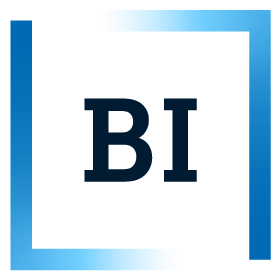EXC 3675 Multisensory Experiences
EXC 3675 Multisensory Experiences
This is a summer course for summer 2021.
Maximum 100 students.
Most of our everyday life experiences are multisensory in nature. They involve many, if not all, of our senses, that is, sight, hearing, touch, taste, and smell, just to mention the ‘traditional’ ones. In this course, we take a journey through the world of multisensory experiences and multisensory experience design. This journey has an international focus that builds on initiatives from researchers and practitioners from all over the world.
We begin by exploring the basis of human sensation and perception. Here, we go through a general introduction about how we sense the world around us and how our brains organize such information that our senses receive. Then, we explore in depth the field of multisensory marketing (multisensory experiences in the context of marketing). We interface with brands through many, if not all, of our senses. The emerging field of multisensory marketing places the human senses at the centre of the consumer experience, or journey.
We also introduce the field of multisensory human-computer interaction, which deals with the role of the human senses in the understanding and creation of the interactions that we have with technology. We discuss how digital multisensory experiences are being studied and utilized throughout the reality-virtuality continuum (in real, mixed reality, and virtual environments) in marketing and beyond. We explore how researchers and practitioners from all over the world are now capitalizing on novel sensory-enabling technologies in order to deliver new experiences in digital environments. After that, we also briefly discuss about multisensory experiences in the arts and finalize the course with reflection on the ethical implications of multisensory experiences.
After comleted course students shall have:
- Fundamentals of sensation and perception
- Principles of multisensory experiences
- Multisensory experiences in marketing
- Multisensory human-computer interaction
- Multisensory experiences in the arts
- International perspectives on multisensory experiences
- Frameworks for multisensory experience analysis and design
After comleted course students will be able to:
- Critically think about sensation and perception, as well as multisensory experiences in business contexts
- Identify and utilize principles of multisensory experiences
- Conceptualize the multisensory experiences across the reality-virtuality continuum
- Elaborate on the different multisensory brand drivers of consumers perception, judgements, and behaviours
- Identify key moments of experience and analyse and/or design the multisensory profile of brand touchpoints
- Suggest and prototype multisensory brand experiences
Conceptualizing, critically evaluating, designing, and managing multisensory experiences throughout the reality-virtuality continuum.
- Multisensory experiences: An overview
- Understanding experiences
- The role of the senses in our experiences
- Defining multisensory experiences
- Sensation and perception and consumer behaviour
- Principles of sensation and perception
- Principles of multisensory perception
- Multisensory marketing in the reality-virtuality continuum
- Brand touchpoints as multisensory devices
- Brand names, logos, and symbols
- Packaging, store, and atmospherics
- Multisensory food experience design
- Digital multisensory marketing
- Multisensory human-computer interaction
- Introduction to human-computer interaction
- User experience and experience design
- Multisensory technologies
- The senses and the arts
- Frameworks for multisensory experience design
- Ethics of multisensory experiences
The content of the course encourages many discussions in the class, varying from psychology to management. There is list of compulsory and suggested references for each of the lectures.
The class has a learning-by-discussing approach (like a workshop). The course offers fewer solo lectures, and instead increase the discussion times regarding key issues and learning points. We encourage the students to participate in our discussions actively with informed, critical, opinions.
The class has a learning-by-discussing approach (like a workshop), therefor Class preparation and participation is expected.
Higher Education Entrance Qualification
Covid-19
Due to the Covid-19 pandemic, there may be deviations in teaching and learning activities as well as exams, compared with what is described in this course description.
.
| Assessments |
|---|
Exam category: Submission Form of assessment: Written submission Weight: 50 Grouping: Group (3 - 6) Duration: 4 Week(s) Exam code: EXC 36751 Grading scale: Point scale leading to ECTS letter grade Resit: Examination when next scheduled course |
Exam category: Activity Form of assessment: Presentation and discussion Weight: 50 Grouping: Group (3 - 6) Duration: 10 Minute(s) Comment: The final grade of the course is based on the course’s project.and a presentation to the class. All projects will be present in a three hour period (10 minutes per group), where the group will both provide feedback to classmates and present their work. This final presentation will be the base for the 50%. One exam-code (continuous assessment), each of these two components will be 50% of the final grade. The students get two points, which together are converted into a final grade (100 %). Exam code: EXC 36751 Grading scale: Point scale leading to ECTS letter grade Resit: Examination when next scheduled course |
| Activity | Duration | Comment |
|---|---|---|
Webinar | 45 Hour(s) | Teaching digitally |
Prepare for teaching | 32 Hour(s) | |
Group work / Assignments | 60 Hour(s) | |
Student's own work with learning resources | 60 Hour(s) | |
Examination | 3 Hour(s) |
A course of 1 ECTS credit corresponds to a workload of 26-30 hours. Therefore a course of 7,5 ECTS credit corresponds to a workload of at least 200 hours.

The students will develop the project since the beginning of the course (fulfilling specific aims in each week), and then they will present to the class the projects in a three hour period (10 minutes per group), where they will both provide feedback to classmates and present their work. This final presentation will be the base for the 100%.
One exam-code (continuous assessment), each of these two components will be 50% of final grade. The students get two points, which together are converted into a final grade (100 %).